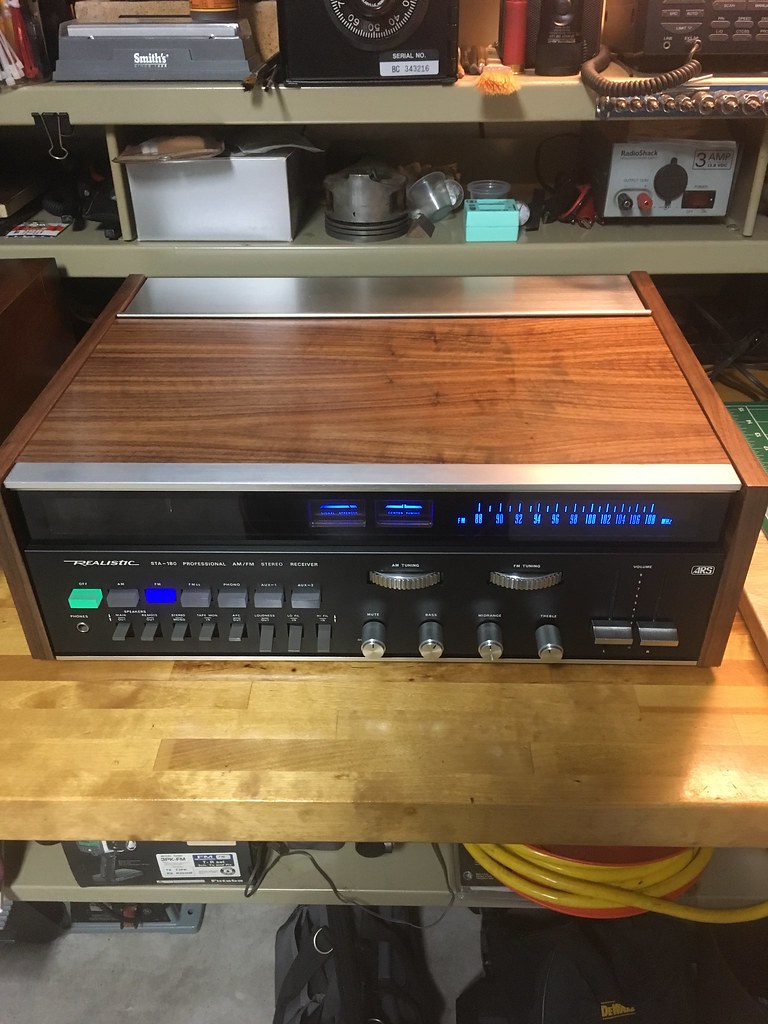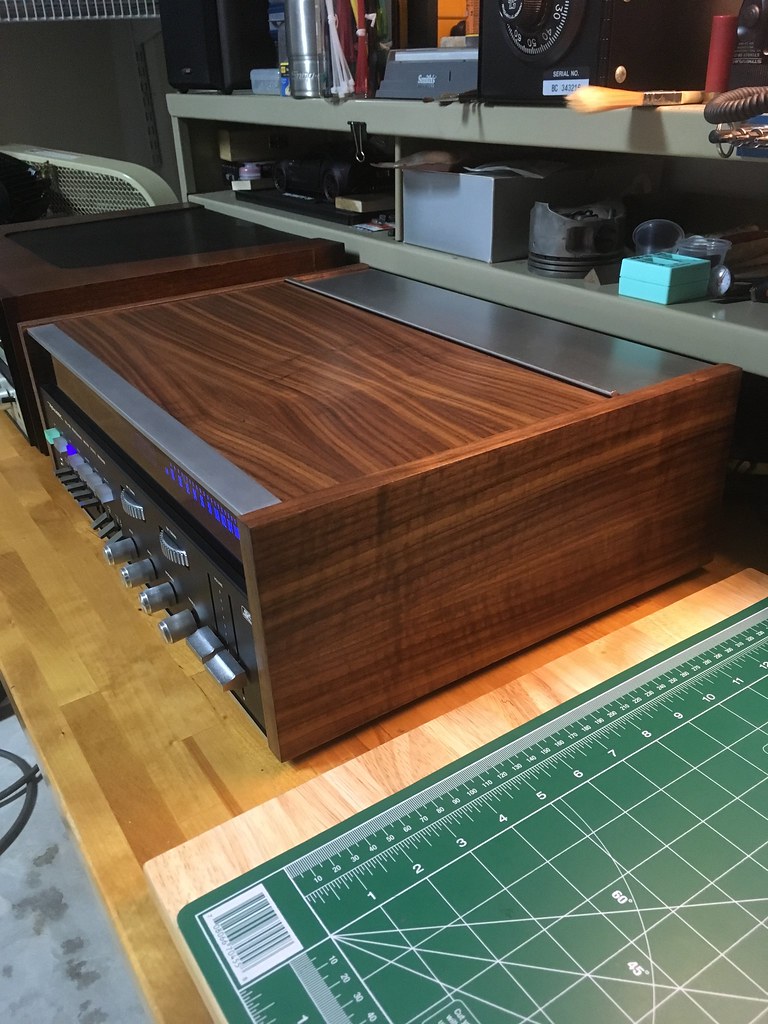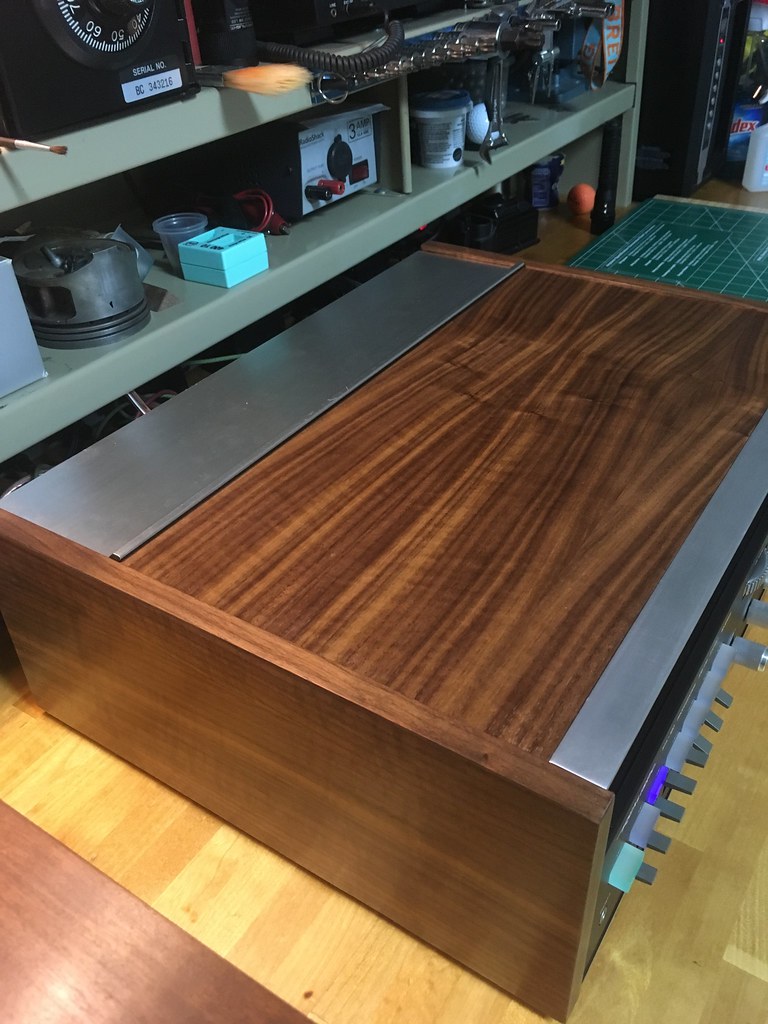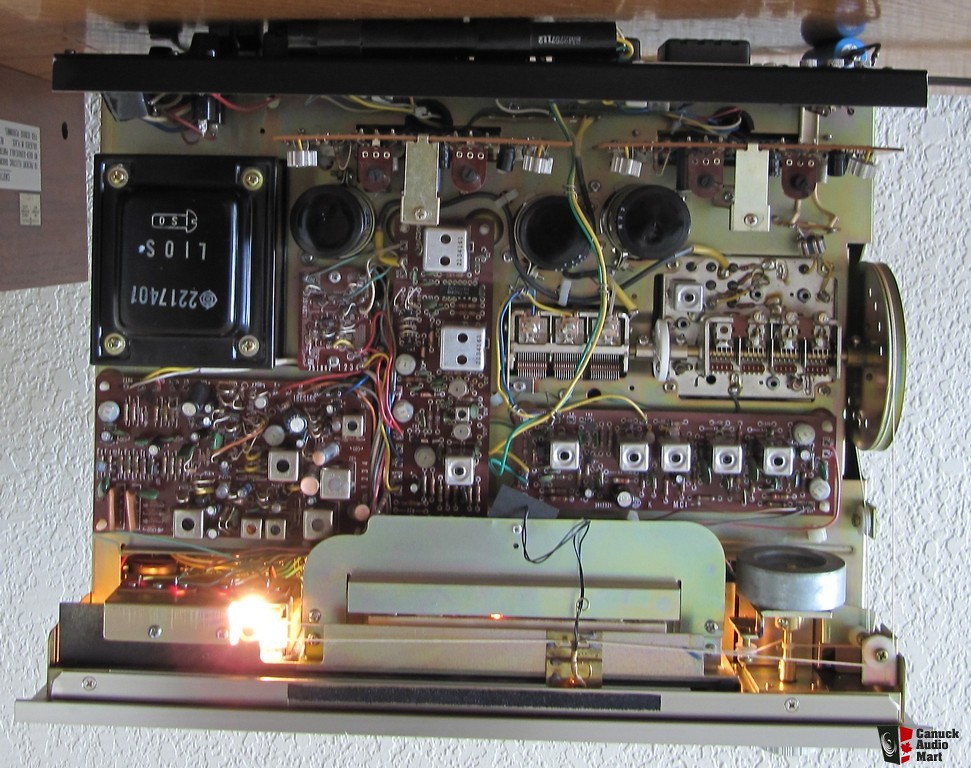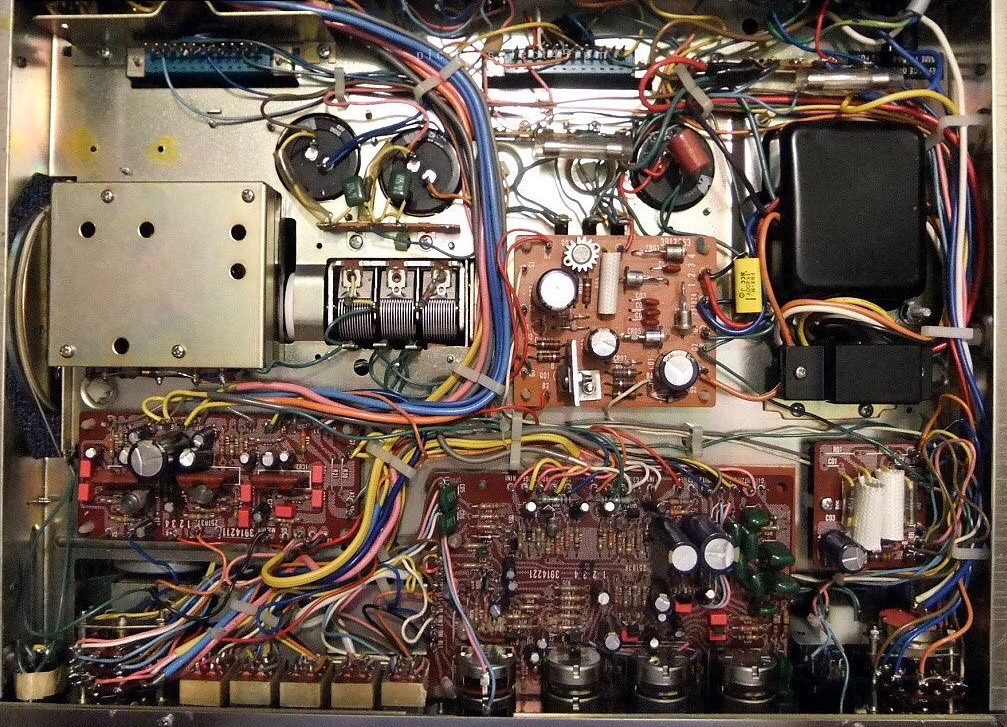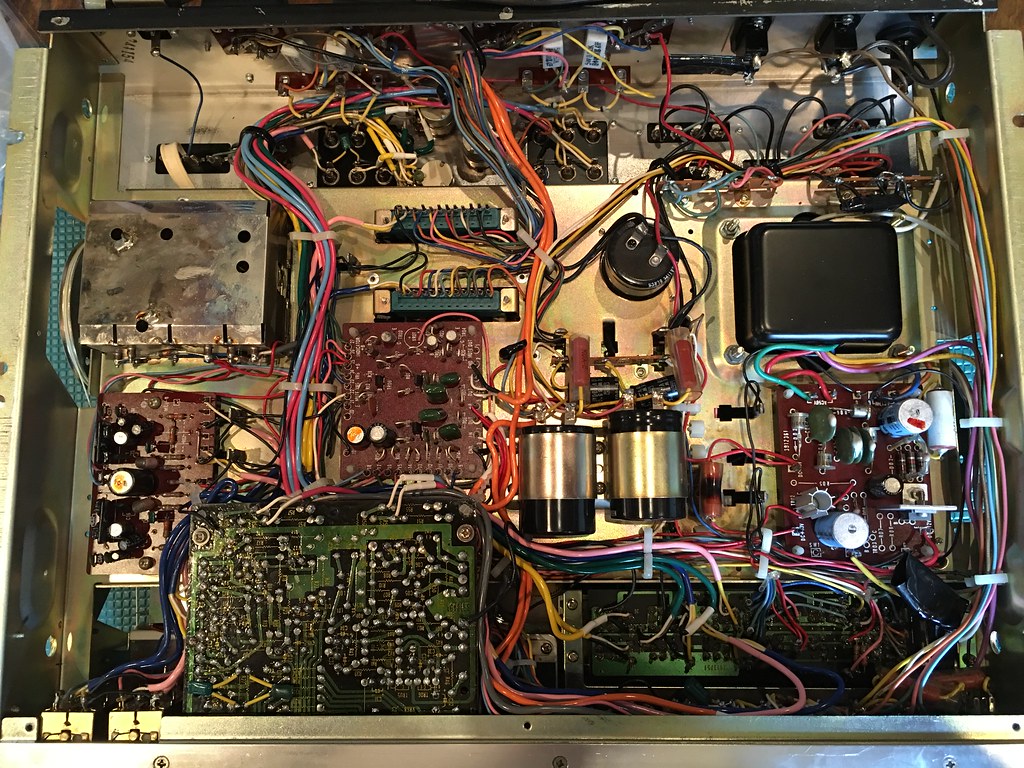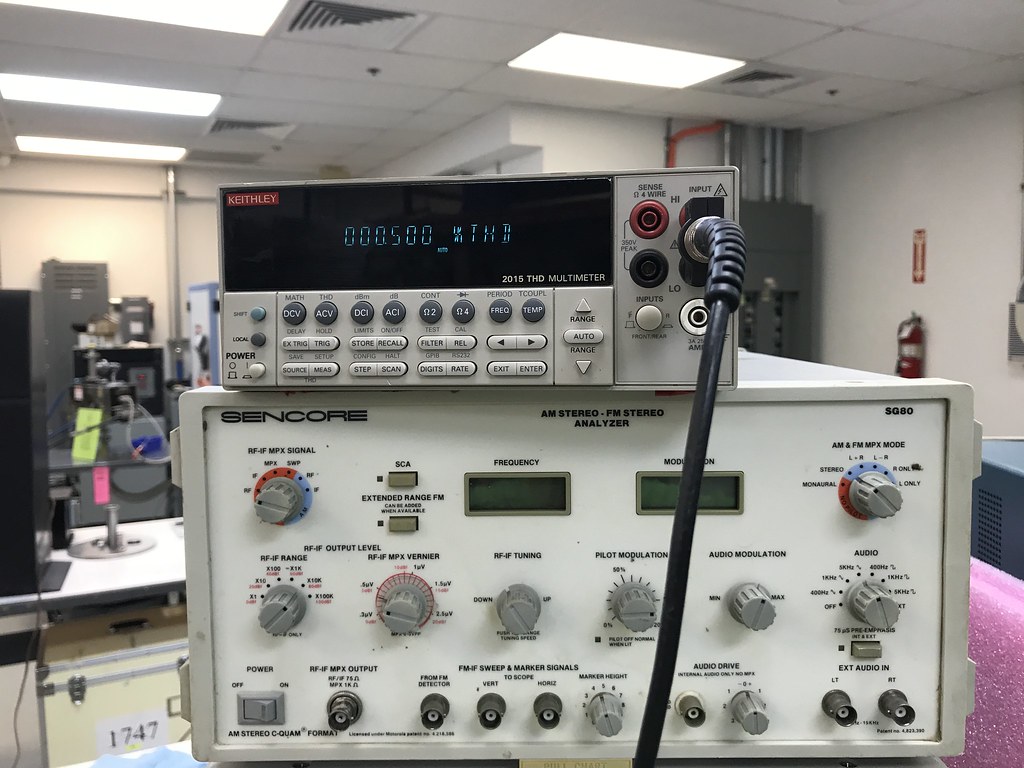I had an STA-180 as a teenager so I thought I would find one again. One turned into three.
I could not find much information on the STA-180 via the web or AK so I thought I would put a few notes together. As I find more I will add it.
A bit of background on the STA-180.
The receiver was custom manufactured for ARS by Hitachi 1972 for just one year. The AMP section is similar to the Hitachi HA-1000. The tuner is similar electronically to the Hitachi SR-1100. I used these documents to figure out how to service the receiver. I was never able to find the service manual. I do have the owners manual.
One of the units came from a former Radio Shack corporate employee. He told me that the design was the brainchild of the head of Radio Shack. I kind of suspect that Marantz was not very happy with ARS. This may be why it only lasted one year.
The receiver sports dual gyroscope type tuners as found on the Marantz stuff, a flip up back panel to get at the connections and selector buttons that light up when depressed. The stereo lamp is on the tuning indicator. When the station is in stereo the indicator turns from white to red. Volume is on a pair of sliders.
Service notes:
The amp section is a breeze to service. The driver boards come out like computer cards. The output transistors are on the back of the unit and can be easily replaced. The rails are fused.
To set the bias just pull the fuse out of the channel you wish to set and replace it with a milliamp meter. Find the driver card and adjust VR02 till the meter reads 30mA.
You also need to adjust the intermediate voltage. Flip the unit over and find the two large filter caps, they feed the rail voltages to the Amps. Measure the cap voltage to ground and set VR01 on the appropriate board until you get 37V.
The power supply was dead on one of the receivers. Dead cap and blown Zener diode. A full recap and replacement of all diodes fixed it.
I went through the receiver and replaced every electrolytic. Some of the boards are a bit of a pain to get to the back side of, especially in the tuner section. I don't really think it was necessary but what the heck. The parts to go after would be the main filter caps, power supply and the driver cards.
One of the receivers had bad solder joints on the driver cards. Carefully check them, they run hot.
See the Hitachi IA-1000 service manual for more info.
The mute, bass, mid and treble pots are often very hard if not impossible to turn. I attempted all kind of stuff to get them moving again. The trick was to drill a small hole in the collar and lube the shaft. You can see the full details here. I used DEoxit F5 Fader lube for the sliders, this made them nice and quiet but it took a few applications.
There is a row of switches below the selector buttons. The switch can get dry and hard to operate. You can carefully apply some lube with a micro lube pen to get them moving very nicely again. The lubrication takes place outside of the actual switch contact. Clean the switch first.
The selector switch lamps are a pain. Mostly because they do not make the correct size any longer. I could not find anyone that had them. The lamp is a fuse type, 45mm in length 10V .33a.
I ended up using 12V Blue LED festoon lamps for the switches. You can find them online at many auto suppliers. They are a bit short for the application so I removed the metal end caps and using a bit of wire soldered them directly to the lamp housing. The housing has existing eyelets that make it simple.
There are some smaller size fuse lamps that are used in the tuning meters, I replaced them with blue LED's as well. The standard ones used on a Marantz receiver worked just fine.
The power off button is just a bayonet style lamp. I used a green bayonet LED.
I ended up replacing the stereo and tuning indicator lamp on one unit with red and white led's. In the future I would just replace them with a grain of wheat lamp, like the original.
The face plate looks to be powder coated or painted heavy in black and the lettering is engraved. I cleaned it up with a magic eraser.
The dial cover is plastic. Mine had a few light scratches and I was able to polish it up using Novus plastic polish.
I sent the walnut cabinets to my father in law for restoration. I should have one back soon.
Sound... It's got a nice warm and powerful sound. The loudness is a bit aggressive so I usually shut it off. The tuner is quite sensitive and sounds very nice.
My iPhone seems to make the push buttons look purple but they are a nice deep blue.
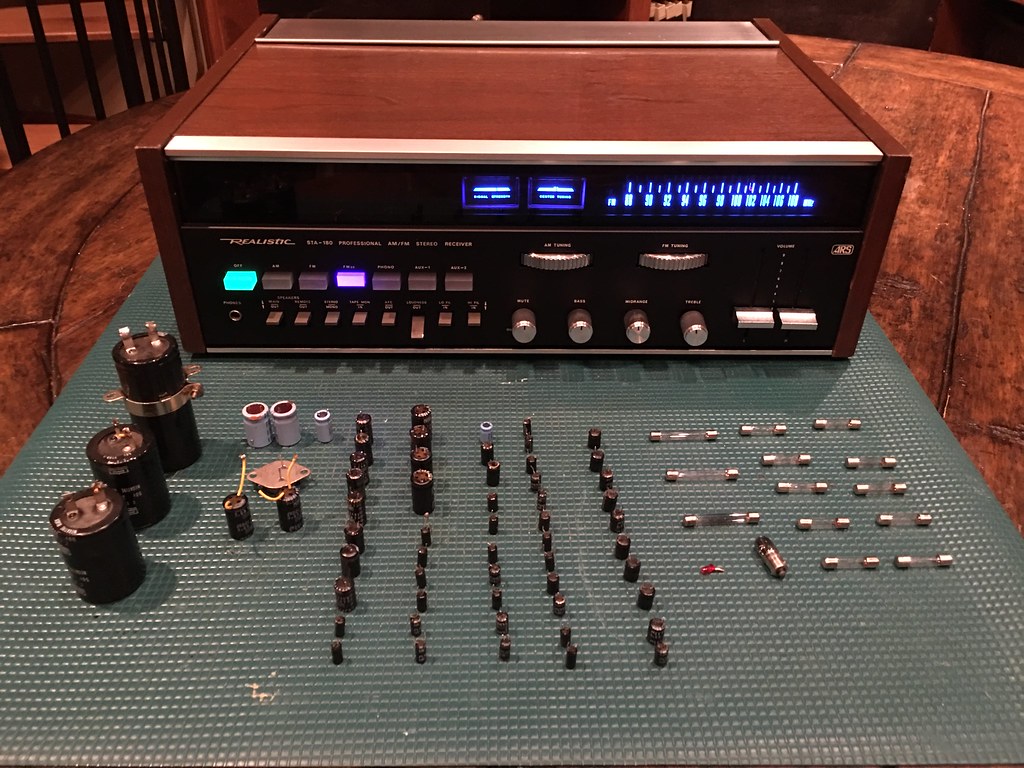
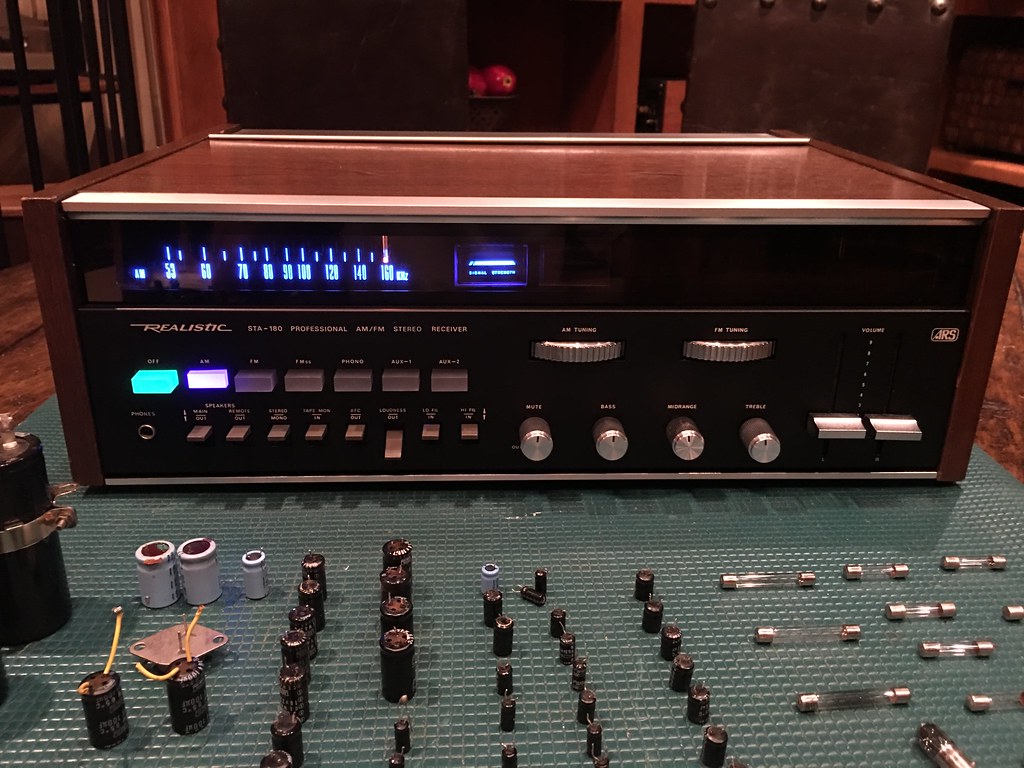
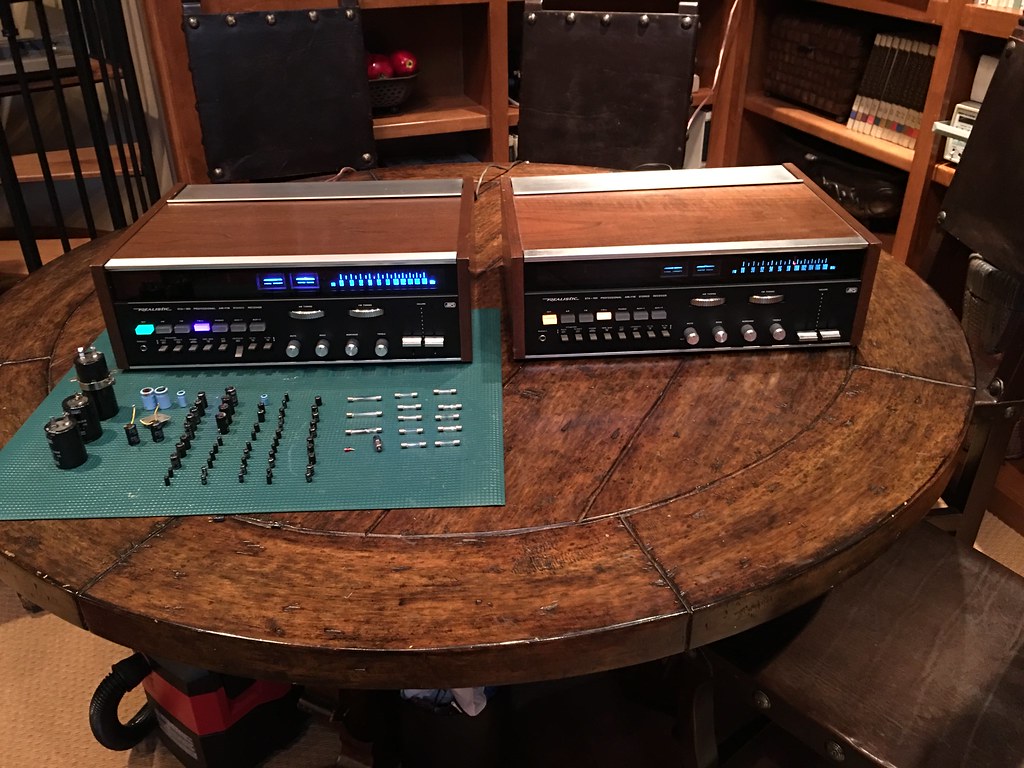
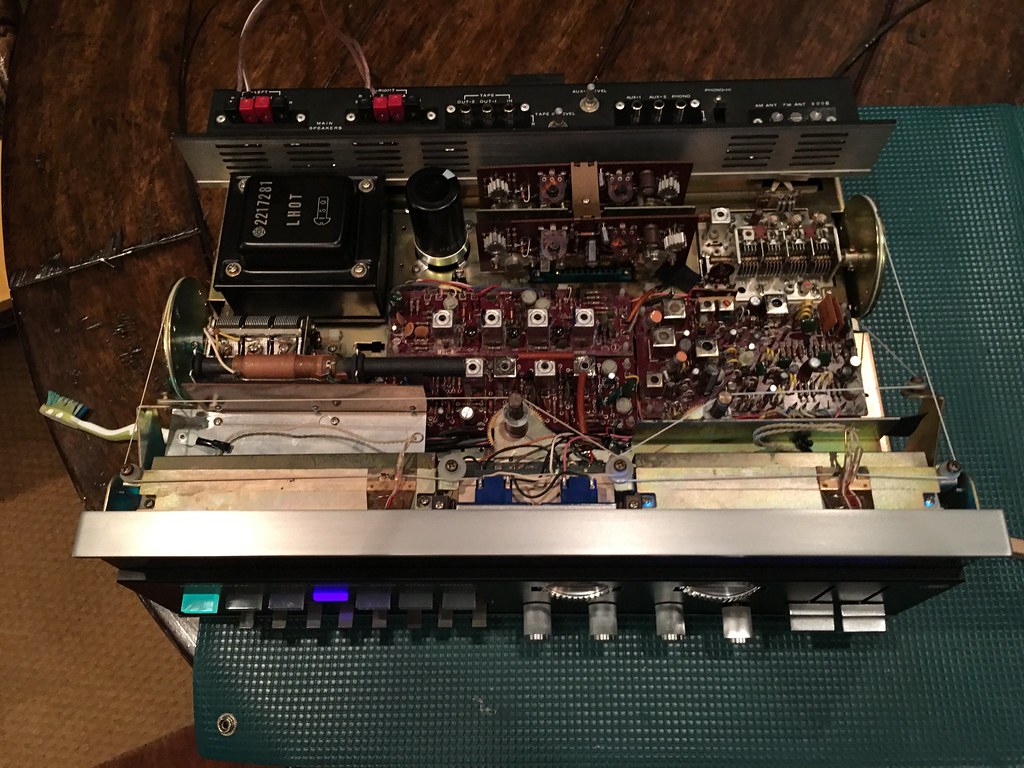

I could not find much information on the STA-180 via the web or AK so I thought I would put a few notes together. As I find more I will add it.
A bit of background on the STA-180.
The receiver was custom manufactured for ARS by Hitachi 1972 for just one year. The AMP section is similar to the Hitachi HA-1000. The tuner is similar electronically to the Hitachi SR-1100. I used these documents to figure out how to service the receiver. I was never able to find the service manual. I do have the owners manual.
One of the units came from a former Radio Shack corporate employee. He told me that the design was the brainchild of the head of Radio Shack. I kind of suspect that Marantz was not very happy with ARS. This may be why it only lasted one year.
The receiver sports dual gyroscope type tuners as found on the Marantz stuff, a flip up back panel to get at the connections and selector buttons that light up when depressed. The stereo lamp is on the tuning indicator. When the station is in stereo the indicator turns from white to red. Volume is on a pair of sliders.
Service notes:
The amp section is a breeze to service. The driver boards come out like computer cards. The output transistors are on the back of the unit and can be easily replaced. The rails are fused.
To set the bias just pull the fuse out of the channel you wish to set and replace it with a milliamp meter. Find the driver card and adjust VR02 till the meter reads 30mA.
You also need to adjust the intermediate voltage. Flip the unit over and find the two large filter caps, they feed the rail voltages to the Amps. Measure the cap voltage to ground and set VR01 on the appropriate board until you get 37V.
The power supply was dead on one of the receivers. Dead cap and blown Zener diode. A full recap and replacement of all diodes fixed it.
I went through the receiver and replaced every electrolytic. Some of the boards are a bit of a pain to get to the back side of, especially in the tuner section. I don't really think it was necessary but what the heck. The parts to go after would be the main filter caps, power supply and the driver cards.
One of the receivers had bad solder joints on the driver cards. Carefully check them, they run hot.
See the Hitachi IA-1000 service manual for more info.
The mute, bass, mid and treble pots are often very hard if not impossible to turn. I attempted all kind of stuff to get them moving again. The trick was to drill a small hole in the collar and lube the shaft. You can see the full details here. I used DEoxit F5 Fader lube for the sliders, this made them nice and quiet but it took a few applications.
There is a row of switches below the selector buttons. The switch can get dry and hard to operate. You can carefully apply some lube with a micro lube pen to get them moving very nicely again. The lubrication takes place outside of the actual switch contact. Clean the switch first.
The selector switch lamps are a pain. Mostly because they do not make the correct size any longer. I could not find anyone that had them. The lamp is a fuse type, 45mm in length 10V .33a.
I ended up using 12V Blue LED festoon lamps for the switches. You can find them online at many auto suppliers. They are a bit short for the application so I removed the metal end caps and using a bit of wire soldered them directly to the lamp housing. The housing has existing eyelets that make it simple.
There are some smaller size fuse lamps that are used in the tuning meters, I replaced them with blue LED's as well. The standard ones used on a Marantz receiver worked just fine.
The power off button is just a bayonet style lamp. I used a green bayonet LED.
I ended up replacing the stereo and tuning indicator lamp on one unit with red and white led's. In the future I would just replace them with a grain of wheat lamp, like the original.
The face plate looks to be powder coated or painted heavy in black and the lettering is engraved. I cleaned it up with a magic eraser.
The dial cover is plastic. Mine had a few light scratches and I was able to polish it up using Novus plastic polish.
I sent the walnut cabinets to my father in law for restoration. I should have one back soon.
Sound... It's got a nice warm and powerful sound. The loudness is a bit aggressive so I usually shut it off. The tuner is quite sensitive and sounds very nice.
My iPhone seems to make the push buttons look purple but they are a nice deep blue.








